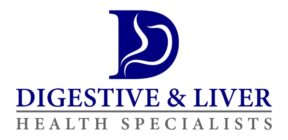The first step towards understanding diverticulosis is learning about the intestine's form and function. The small intestine is a lengthy, thin piece of bowel that extends from the stomach to the colon (also known as the large intestine). The colon begins at the right lower abdomen. It runs the length of the abdomen, forming a huge question mark before terminating at the rectum. The colon's sigmoid (S-shaped) portion is directly above the rectum. Liquid stool enters the right part of the intestine, which dehydrates as it passes through, eventually becoming a formed stool that enters the rectum[1].

(5)
The Sigmoid Colon
The sigmoid colon's unique function is to contract vigorously to maintain high pressure. This action controls stool flow into the rectum. Furthermore, because the sigmoid is a high-pressure colon area, most diverticula arise here.
Diverticulosis
Diverticulosis is a condition in which pockets or projections extend out from the large intestine. The development of diverticulosis occurs gradually over an extended period. Diverticula develop at the bowel wall's naturally weak areas. One can consider diverticula to be “wrinkles” of the colon that occur with aging.
The pockets form as a result of the contraction of the colon. As previously stated, because the sigmoid colon has the highest pressure in the colon, most diverticula arise here. The sigmoid frequently becomes thickened and narrowed due to these bubble-like projections. Significant changes in bowel function may occur, which later cause problems like discomfort, constipation, and diarrhea[2].
Who Is Affected by Diverticulosis?
Diverticulosis becomes apparent later in life as it can take decades to develop. However, it is not an uncommon condition among adults in their 30s. The colon, particularly the sigmoid colon, eventually becomes studded with these projections. The condition is typical in Western society, and is relatively rare in Africa and much of Asia. Diets primarily consisting of processed foods and low fiber cereals are considered a main factor in the development of diverticulosis. Thus, high fiber consumption is considered beneficial.
Diverticulosis Symptoms
Typically there are zero to few apparent symptoms when diverticula initially develop.
Over time, the lower intestine may become very fixed, twisted, and even constricted when diverticulosis has advanced. Pellet-shaped or thin stools, constipation, and a rare burst of diarrhea may occur. The issue then becomes mechanical or structural, and treatment becomes more challenging.

Diverticulosis Complications
It is interesting to know that not many people face complications of diverticulosis in comparison to the overall prevalence of the disorder. Nonetheless, issues do arise and can be pretty serious. Among these issues, diverticulitis is quite concerning[3].
Diverticulitis
Like a balloon, a thin wall develops compared to the rest of the colon as a diverticulum swells. Numerous beneficial bacteria reside in the colon and are helpful as long as they remain there. However, good bacteria can cause infection by seeping through the diverticula's thin wall. Diverticulitis is the term used to describe an infection around the diverticula. It is usually negligible, causing slight uneasiness in the left lower abdomen. However, it can sometimes get reasonably severe, accompanied by considerable pain and fever. Antibiotics are a usual treatment for moderate-to-severe diverticulitis. In addition to antibiotics, patients are usually asked to fast from food and beverages, as intestinal rest can help control and even improve the length and severity of the illness. In severe instances, the patient may have to be hospitalized.
Bleeding
Bleeding can occasionally occur due to a damaged blood vessel in the diverticula. This bleeding may result in blood flow from the rectum or, on rare occasions, deeper, mahogany-colored stools if the bleeding originates from a diverticulum present in the right colon.
Perforation
This is a rare, but dangerous consequence of diverticulosis. It may occur as a result of severe diverticulitis. Bacteria can enter the abdomen and cause peritonitis or an abscess. Typically, abdominal surgery is required to resolve this issue.
Summary
Diverticulosis is a potentially preventable illness if addressed in its early stages with dietary control. At any point, effective treatment is frequently accessible. Diverticulitis, a consequence of diverticulosis, is easily detectable and can usually be treated on an outpatient basis. Prevention and treatment programs may be tailored to the patient's specific needs by collaborating with your provider team at Digestive & Liver Health Specialists [4].
References:
[1] A. E. Thompson, “Diverticulosis and Diverticulitis,” JAMA, vol. 316, no. 10, p. 1124, Sep. 2016, doi: 10.1001/jama.2016.3592.
[2] J. Martel and J. B. Raskin, "History, Incidence, and Epidemiology of Diverticulosis," J. Clin. Gastroenterol., vol. 42, no. 10, pp. 1125–1127, Dec. 2008, doi: 10.1097/MCG.0b013e3181865f18.
[3] R. Akhrass, M. B. Yaffe, C. Fischer, J. Ponsky, and J. M. Shuck, "Small-bowel diverticulosis: perceptions and reality,” J. Am. Coll. Surg., vol. 184, no. 4, pp. 383–388, Apr. 1997.

